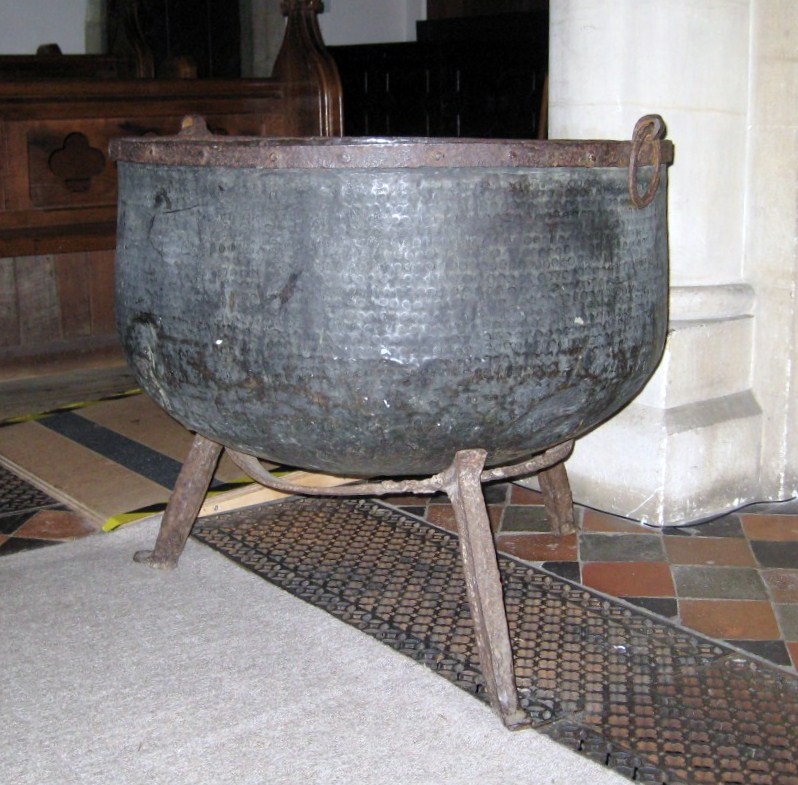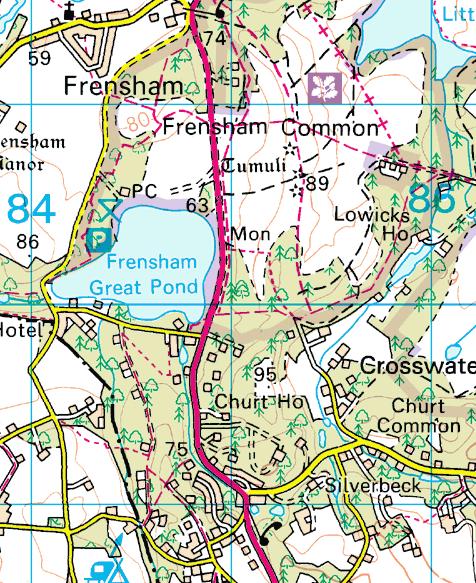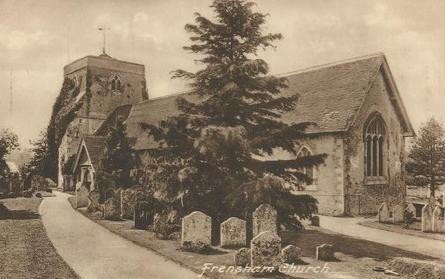Aubrey the English antiquarian recorded this tradition in 1718 about a cauldron in the church, a cauldron that is still there: In the Vestry here is an extraordinary great kettle or cauldron, which the inhabitants say by tradition was brought hither by the Fairies, time out of mind, from Borough Hill, about a mile from hence. To this place if any one went to borrow a yoke of oxen, money, &c. he might have it for a year, or longer, so he kept his word to return it. There is a cave, where some have fancied to hear musick. On this Borough-hill (in the Tything of Cherte), is a great stone lying along the length of about six feet; they went to this stone and knocked at it, and declared what they would borrow, and when they would repay; and a voice would answer when they should come, and that they should find what they desired to borrow at that stone. This cauldron, with the trivet, was borrowed here after the manner aforesaid, but not returned according to promise; and though the cauldron was afterwards carried to the stone, it could not be received: and ever since that time no borrowing there.  In 1736 Salmon gives a rather more pragmatic explanation: The great Caldron which lay in the Vestry beyond the Memory of Man was no more brought thither from Waverley than, as report goes, by the Fairies. It need not raise any man’s wonder for what use it was, there having been many in England till very lately to be seen, as well as very large Spits which were given for entertainment of the Parish at the Wedding of poor Maids. So was in some places a Sum of Money charged upon Lands for them; and a House for them to dwell in for a year after Marriage (139). Note that in subsequent centuries the cauldron was detached from Borough-Hill (no one is sure where this hill is) and associated, instead, with Ludwell.
In 1736 Salmon gives a rather more pragmatic explanation: The great Caldron which lay in the Vestry beyond the Memory of Man was no more brought thither from Waverley than, as report goes, by the Fairies. It need not raise any man’s wonder for what use it was, there having been many in England till very lately to be seen, as well as very large Spits which were given for entertainment of the Parish at the Wedding of poor Maids. So was in some places a Sum of Money charged upon Lands for them; and a House for them to dwell in for a year after Marriage (139). Note that in subsequent centuries the cauldron was detached from Borough-Hill (no one is sure where this hill is) and associated, instead, with Ludwell. 


